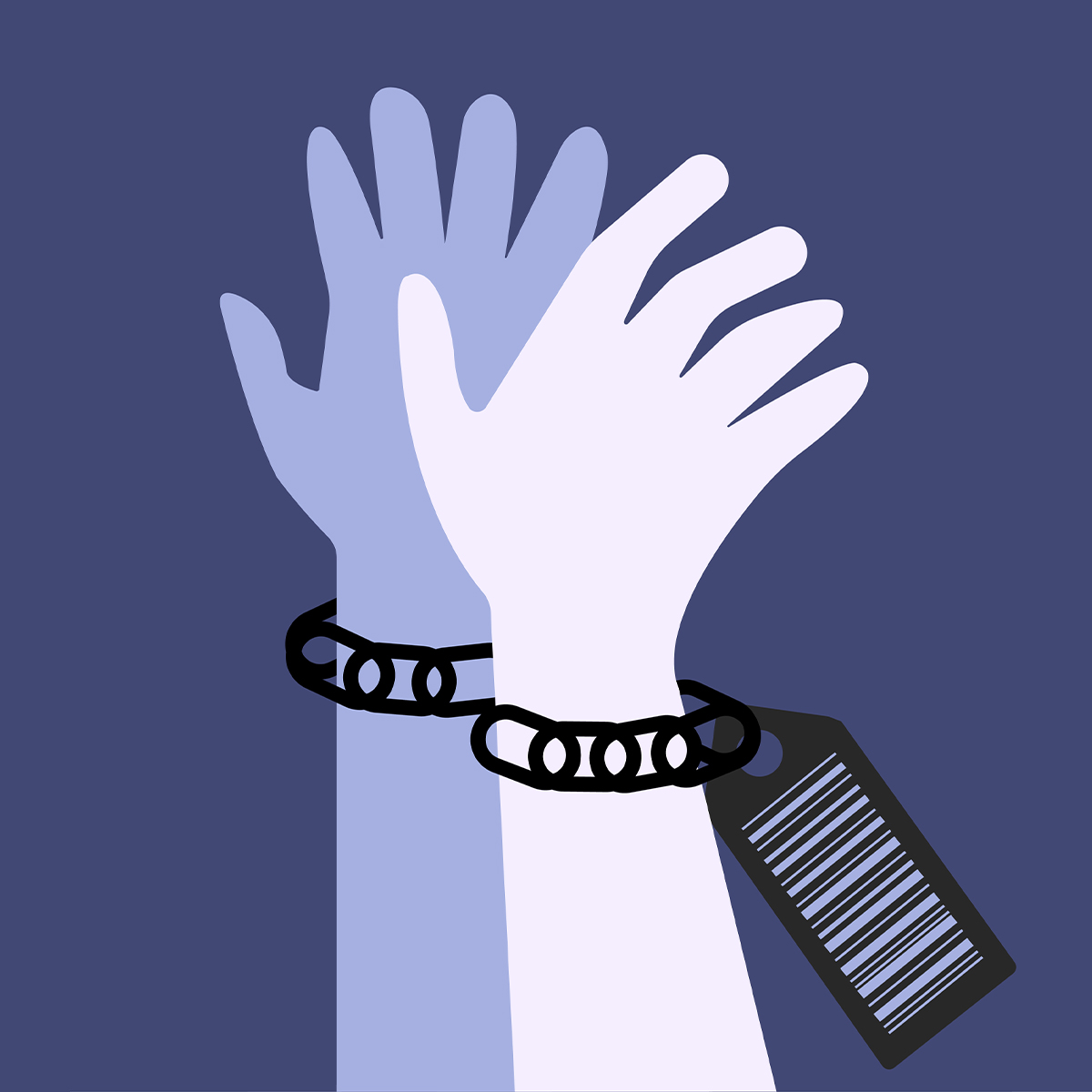-
Property & Casualty
Property & Casualty Overview

Property & Casualty
We offer a full range of reinsurance products and the expertise of our talented reinsurance team.
Expertise
Publication
Florida Property Tort Reforms – Evolving Conditions
Publication
Is Human Trafficking the Next Big Liability Exposure for Insurers?
Publication
When Likes Turn to Lawsuits – Social Media Addiction and the Insurance Fallout
Publication
Generative Artificial Intelligence and Its Implications for Weather and Climate Risk Management in Insurance
Publication
Engineered Stone – A Real Emergence of Silicosis
Publication
Who’s Really Behind That Lawsuit? – Claims Handling Challenges From Third-Party Litigation Funding -
Life & Health
Life & Health Overview

Life & Health
We offer a full range of reinsurance products and the expertise of our talented reinsurance team.

Publication
Understanding Physician Contracts When Underwriting Disability Insurance
Publication
Voice Analytics – Insurance Industry Applications [Webinar]
Publication
GLP-1 Receptor Agonists – From Evolution to Revolution U.S. Industry Events
U.S. Industry Events
Publication
Always On: Understanding New Age Addictions and Their Implications for Disability Insurance
Publication
Dying Gracefully – Legal, Ethical, and Insurance Perspectives on Medical Assistance in Dying -
Knowledge Center
Knowledge Center Overview

Knowledge Center
Our global experts share their insights on insurance industry topics.
Trending Topics -
About Us
About Us OverviewCorporate Information

Meet Gen Re
Gen Re delivers reinsurance solutions to the Life & Health and Property & Casualty insurance industries.
- Careers Careers
How Unlocking Claims Team Knowledge Can Add Value to Your Business

Every claim tells a different story, which is one of the best things about being a claims manager. Our work gives us insight into different industries and how they operate on a day to day basis, from an “ordinary” fire in a building to a very complex liability case that involves different jurisdictions and contract wordings.
Not surprisingly, the claims information held by the claims department is arguably the most valuable source of data related to each line of business or account in any average insurance or reinsurance company.
No underwriter likes to hear the word “claim”, especially about a risk they underwrote (I’m not the first claims manager to have been wryly awarded a nickname for being a bearer of bad news). However, the data held by the claims department is a veritable treasure trove of information for improving underwriting assessment and tools.
Claims – The Materialization of Risk
In France, the expression “marchand de securité” is often used to refer to insurers since risk is uncertain and what’s really being sold is security. When we purchase insurance, we are buying “security” for our asset in case that uncertain event, also called risk, turns into a loss that generates a claim.
Underwriters work with various tools to model and price risks and rates can vary depending on the likelihood of the event. The amount of accurate data available to help with pricing makes a huge difference in the underwriting process. Obtaining and applying data to identify patterns or even detect possible “black swan” events is something that the claims department is well placed to help with.1
With increasingly sophisticated technology on our side, the claims department can record losses on a database according to type, cause and many other details that could be relevant.
Indeed, without the benefit of concrete claims information provided by the claims department, it can be difficult to predict how claims can arise from certain types of risks. Take these two examples:
- Product Liability – Glass Jar Candles: What kind of risk do we associate with the small candles commonly found in shops? “Accidental fire” is probably the first thing that comes to mind, but there is much more to these innocent looking candles. In the US, they recalled different brands of glass jar candles related to cuts and lacerations caused by breaking glass. Most of the cases involved glass shattering when the candle was lit, but some were also simply from the act of opening the glass jar.2
- Professional Liability – Fraud Committed by an Intermediary: No policy or reinsurance agreement is designed to cover fraud: this is very clear in most exclusions. But a fraudulent act can end up being covered when a professional with liability coverage is the victim of fraud and this fraud causes damage to third parties. In such cases, depending on the contract language, the insured can be found liable for such damages. A recent example, we encountered involved a reinsurance broker that used the services of another reinsurance broker to help with the placement of some risks. The slips were received but the insured went without coverage because the slips were found to be fake.
Claims input is also very helpful when it comes to different jurisdictions and discovering which law is applicable in the event of a claim. The claims department is usually familiar with all the statutes of limitation deadlines and other important aspects that can help underwriters to evaluate the exposure tail for a certain risk, in a certain location.
Wordings – The Devil is in the Details
Lengthy contracts and very complex expressions can make wordings reviews a nightmare. Sometimes it is also difficult to foresee how these clauses will operate and respond when there is a concrete dispute. This is where the claims department plays a very important role.
Common problems we often see when analyzing a claim are with clauses at the very beginning of the insurance policy. Although frequently ignored, they are significant.
- Insured: We sometimes see policies that mention “Insured X and others” or in some cases, “Insured X and subsidiaries”. Experience has taught us that it pays to have all the insureds nominated and properly named in the policy to avoid surprises afterwards.
- Risk Location: It is very important to have all the locations mentioned in the policy and, more than that, the correct address and extent of the property you are covering. It helps to avoid underinsurance or coverage that can be interpreted to be wider than intended.
- Time Zone: Clearly define the inception day, time and city for the risk. Some countries, like Brazil or the US, have more than one time zone, and it is necessary to define which one applies to that particular risk.
- Deductible and Obligatory Participation of the Insured: These have two distinct definitions, but it is not unusual to see them being mixed up. Ensure that the insurance policy has them well described.
- Defense Costs: Before establishing a definition on which type of defense costs will be covered it is necessary to know the jurisdiction you are dealing with. Some countries have only civil and criminal processes, others have dedicated courts for complaints arising from labor relations. If that’s the case, if the policy only establishes coverage for civil justice costs, the insured will have no right to receive defense costs when the case is being judged by the labor court.
As most wording problems are only discovered after a claim is presented and coverage investigated, it is always better to consult the claims department for feedback on policy wordings at the outset.
On the insured side, the claims department can often provide the insured with an overview of circumstances that generate claims and the reasons why. This can make the conditions far clearer to the insured and reduce the number of questionable or clearly non-covered claims.
Risk Prevention – Call Claims on 0800…
Risk prevention is a major concern today and claims feedback can help reinsurers, insurers and insureds improve their processes and minimize both the frequency and severity of claims.
Knowing what can happen and being able to predict worse case scenarios using the data at our fingertips, makes claims teams an excellent resource when it comes to providing feedback on safety aspects. Lists of dos and don’ts and other precautionary measures can be prepared for a variety of different industries to minimize future claims. For example, within the hospitality industry, there’s a very good reason why even the most exclusive hotels often don’t have glass shower screens.
We are seeing many insurance companies investing more in their own risk prevention departments that work closely with insureds and help to ensure important precautions are being followed to avoid claims.
Technology is also being harnessed in helpful ways. For example, GPS and tracking apps can monitor the location of insured’s and their property to cascade messages in the blink of an eye if a natural peril is approaching a certain area.
What Can Be Done Differently? – There’s a Lesson in Every Claim
Learning from past claims experience is useful for underwriters and insureds: understanding real examples from claims helps the insured improve safety procedures or raise awareness of the need to obtain coverage for any residual risk.
It isn’t always easy to capture people’s attention simply by using theory but using interesting scenarios and concrete examples stimulate interest and interaction. Claims-led “lessons from losses” sessions are an ideal way to impart best practices for potential situations in the future.
A typical losses session could include:
- A claim example with the details of the occurrence, coverage and amount paid;
- Discussion with the team on what they think went wrong;
- A review of the different perspectives;
- Brainstorm of what could have been done differently; and
- The steps to be taken to avoid repeating the same mistakes.
Insurers and insureds can also draw on the large contact lists belonging to claims departments to assist with the learning experience. This includes adjusters, lawyers, forensic accountants, reinsurers, and other experts able to provide presentations, details and risk-specific information that is valuable for creating, for example, risk-based pricing segmentation models.
Tailor-Made Coverage and Product Design
Having a detailed overview of daily claims activity, new legislation coming into force and the lack of coverage in certain situations means claims staff can provide information to underwriters on needs that are not yet being catered for in the market. For example, a succession of claims that were denied due to a recurrent exclusion in the policies may point toward an opportunity to develop a stand-alone coverage for that specific risk. If so, the claims department can also help to collect data available within the market on how this coverage would work, the likelihood of claims happening, and the types of claims that could arise from that new product.
Conclusion
At Gen Re, we know that our ability to fulfil the promises we make to our clients is based on deep collaboration between our underwriters and claims professionals. The advantages of this close collaboration and exchange of information are multiple, from improving the pricing tools for a certain portfolio through to sharing interesting claims examples that make the impact of certain risks more visible and effective risk prevention possible.
We’d be happy to share more of our perspective on ways to unlock this potential within your business – reach out to your local Gen Re contact.
Endnotes
- According to Nassim Nicholas Taleb, these events are rare, have an extreme impact, and are known for their retrospective predictability.
- https://www.torklaw.com/legal-info/dangerous-candles-recalled/




